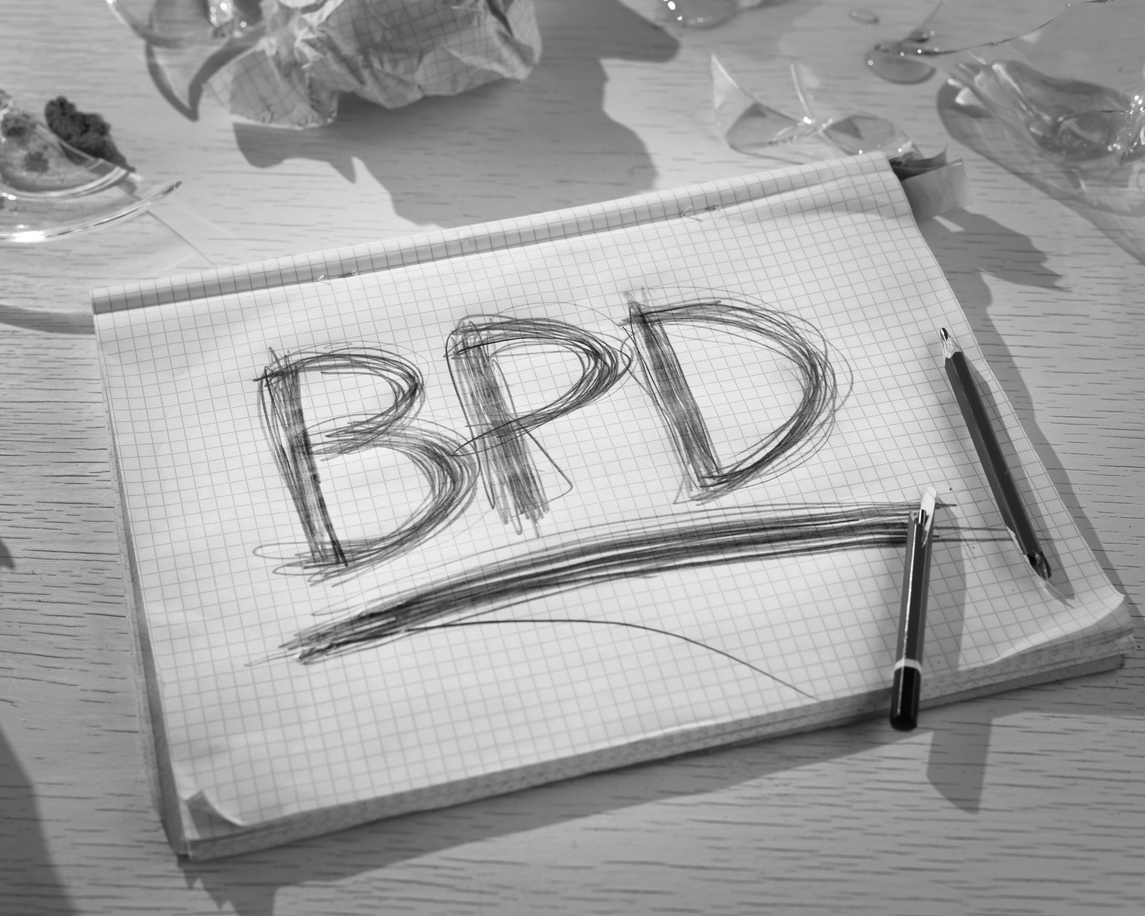Borderline Personality Disorder (BPD) is a complex and challenging mental health condition that affects an estimated 1.4% of adults in the United States. Intense and unstable emotions, impulsive behaviour, distorted self-image, and unstable relationships with others characterize it.
Historically, BPD was often misunderstood and stigmatized, with people living with the condition facing negative stereotypes and discrimination. However, in recent years, there has been a growing recognition of the challenges faced by people with BPD and a shift in attitudes toward more compassionate and effective treatment approaches.
Today, many positive developments in BPD treatment offer hope for those living with this condition. From evidence-based therapies to new biological treatments, individuals with BPD have access to various interventions that can help them manage their symptoms, improve their quality of life, and ultimately thrive.
This blog post will explore BPD in more detail, including its history, common myths, and evidence-based treatments. We will also examine some of the latest developments in BPD treatment, including biological interventions, and share stories of hope and recovery from people who have lived with BPD.
The Myths Surrounding BPD
Despite growing awareness and understanding of BPD, many myths and misconceptions still surround the condition. These myths can perpetuate negative stigmatization and make it difficult for individuals with BPD to receive the necessary care and support.
One of the most common myths surrounding BPD is that it is untreatable. However, this is not true. While BPD can be a challenging condition to manage, evidence-based treatments are effective in helping people with BPD to improve their symptoms and quality of life.
Another myth is that people with BPD are manipulative or attention-seeking. This harmful stereotype can lead to negative attitudes towards individuals with BPD, making it difficult for them to receive the support and understanding they need. In reality, people with BPD often struggle with intense emotions and can have difficulty regulating them, leading to impulsive behaviour and unstable relationships.
The negative stigmatization surrounding BPD can also make it difficult for individuals with the condition to access appropriate care. Some mental health professionals may be reluctant to diagnose or treat BPD, while others may lack the specialized knowledge and skills needed to manage the condition effectively. This can lead to delays in treatment and a sense of hopelessness for people with BPD.
Living with BPD can be a challenging and often isolating experience. Individuals with the condition may struggle with intense emotions, self-harm, and relationship difficulties, among other symptoms. However, it is important to remember that recovery is possible, and with the right treatment and support, people with BPD can learn to manage their symptoms and live fulfilling lives. By understanding the realities of living with BPD and challenging harmful myths and stereotypes, we can help to create a more compassionate and supportive environment for individuals with this condition.
BPD Treatment
BPD is a treatable condition, and there are many evidence-based treatment options available that are effective in helping individuals with BPD to manage their symptoms and improve their quality of life.
One of the most widely recognized treatments for BPD is Dialectical Behavior Therapy (DBT). This therapy is based on the idea that individuals with BPD struggle with regulating their emotions and often have a history of invalidation, making it difficult to manage their emotions effectively. DBT teaches individuals skills such as mindfulness, distress tolerance, and emotion regulation to help them manage their emotions and improve their relationships.
Other evidence-based treatments for BPD include Mentalization-Based Therapy (MBT), Schema Therapy, and Transference-Focused Psychotherapy (TFP). These therapies focus on different aspects of BPD, such as addressing underlying schemas, exploring the patient’s inner world, and building a positive relationship with the therapist.
It is important to note that BPD treatment should be individualized to each patient’s specific needs and challenges. Different individuals may respond better to different types of therapy, and a one-size-fits-all approach is unlikely to be effective. Therefore, it is essential that treatment is tailored to the unique needs and goals of each individual with BPD.
Promising developments in BPD treatment include new biological interventions, such as using ketamine or oxytocin to help manage symptoms of BPD. These treatments are still in the early stages of research, and their efficacy and safety are not yet fully understood. However, they offer new avenues for treatment and may help individuals with BPD who have not responded to other forms of therapy.
Overall, BPD treatment can be effective, and individuals with BPD should not lose hope. With the right treatment and support, people with BPD can learn to manage their symptoms and live fulfilling lives.
Recovery and Success Stories
Recovery from BPD is possible, and many individuals with the condition have successfully overcome their symptoms and achieving a fulfilling life. Recovery may not mean the complete absence of symptoms but rather the ability to manage symptoms effectively and lead a meaningful life.
There are many examples of individuals who have successfully recovered from BPD. For example, Marsha Linehan, the creator of DBT, has spoken publicly about her own experiences with BPD and how she overcame it. She is now a renowned psychologist and a leading authority on BPD treatment.
Other individuals with BPD have shared their success stories online, through books, and through other media. These stories offer hope and inspiration to others with BPD and demonstrate that recovery is possible.
It is important to note that recovery from BPD is not linear, and setbacks and challenges may still occur. However, individuals with BPD can achieve a meaningful and fulfilling life by learning to manage symptoms effectively and seeking appropriate treatment and support.
The importance of hope and optimism in recovery cannot be overstated. It is easy to feel hopeless and discouraged when living with a challenging condition like BPD, but it is essential to remember that recovery is possible. By focusing on the positives and seeking out support and treatment, individuals with BPD can learn to manage their symptoms and lead a fulfilling life.
In conclusion, recovery from BPD is possible, and there are many success stories to draw inspiration from. By staying hopeful, seeking out appropriate treatment and support, and learning to manage symptoms effectively, individuals with BPD can overcome this challenging condition and achieve a meaningful life.
Biological Treatments
While psychotherapy has been the primary treatment for BPD, new research has explored biological treatments for the condition. These treatments include the use of medications, such as ketamine, oxytocin, and other drugs that target the brain’s neurotransmitter systems.
Ketamine, which is an anesthetic drug, has shown promise in reducing symptoms of depression and suicidal ideation in individuals with BPD. Similarly, oxytocin, which is a hormone involved in social bonding, has been shown to improve social cognition and reduce negative affect in individuals with BPD. Other medications, such as antipsychotics and mood stabilizers, may also be used to manage specific symptoms of BPD, such as mood instability and impulsivity.
However, while these new biological treatments show promise, there are limitations to their use. Some of these treatments may have side effects, and their long-term efficacy and safety are still under investigation. Moreover, these treatments should not be viewed as a replacement for psychotherapy, which remains a critical component of BPD treatment.
Biological treatments may also improve overall BPD treatment options by offering new avenues for individuals who have not responded to other forms of therapy. For some individuals, a combination of psychotherapy and medication may be the most effective treatment approach.
Overall, while biological treatments for BPD are still in the early stages of research, they offer new hope and opportunities for individuals with the condition. With further research, we may better understand the mechanisms of BPD and the most effective treatment approaches.
The Future of BPD Treatment
As our understanding of BPD continues to evolve, there is potential for further advancements in BPD treatment. Ongoing research may lead to new and more effective therapies, including both psychotherapy and biological interventions. For example, the use of virtual reality therapy and other innovative treatment approaches may offer new ways to help individuals with BPD manage their symptoms.
It is also essential that we continue to build our understanding of BPD as a condition. By gaining a better understanding of the biological and psychological mechanisms of BPD, we can improve our ability to diagnose and treat the condition. Additionally, by increasing awareness and understanding of BPD, we can work to reduce the stigma and discrimination surrounding the condition.
The significance of recognizing and addressing BPD in mental health care cannot be overstated. BPD is a challenging condition that can have a significant impact on individuals’ lives, as well as on the lives of those around them. By providing appropriate treatment and support, we can help individuals with BPD manage their symptoms and achieve a meaningful life.
Therefore, it is essential that mental health professionals receive specialized training in BPD diagnosis and treatment. By increasing access to evidence-based treatments and providing compassionate and effective care, we can improve outcomes for individuals with BPD and reduce the burden of the condition on society as a whole.
In conclusion, the future of BPD treatment holds great promise. By continuing to invest in research and understanding of the condition, we can improve our ability to diagnose and treat BPD effectively. By recognizing the importance of addressing BPD in mental health care, we can provide the support and resources necessary for individuals with BPD to live fulfilling lives.
Conclusion
In conclusion, Borderline Personality Disorder (BPD) is a challenging but treatable condition. While there have been negative stigmatizations and myths surrounding BPD in the past, recent positive developments in BPD treatment offer hope for those living with this condition.
We started by explaining what BPD is and its historical context, followed by exploring the myths surrounding BPD and the realities of living with the condition. We then discussed evidence-based treatment options for BPD and promising developments in biological treatments. Furthermore, we highlighted the importance of recognizing and addressing BPD in mental health care and investing in further research to understand the condition better and improve treatment outcomes.
If you are living with BPD, we encourage you to seek appropriate treatment and support. Recovery from BPD is possible; many success stories offer hope and inspiration. You can achieve a fulfilling life by learning to manage your symptoms and seeking effective treatment.
In conclusion, while BPD can be a challenging condition to manage, with the right treatment and support, individuals with BPD can lead meaningful lives. We hope this post has offered valuable information and insights into BPD, and we encourage you to continue seeking support and resources as needed. Remember, recovery is possible; there is always hope for a brighter future.
Disclaimer: This blog shares general information only, not professional advice or recommendations. Consult healthcare providers for personal guidance. Decisions based on content are the reader's responsibility. Thank you.




